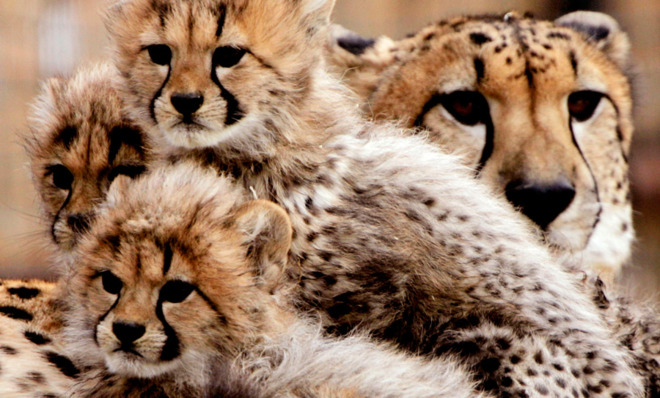Maybe lions aren't cheetah-murdering monsters after all
Kumbaya

In the early 1990s, researchers working in Africa's Serengeti plain made a worrying discovery. They'd been monitoring more than 100 cheetah cubs since birth, and by the end of the study, less than 5 percent had survived to adolescence. From what the researchers could tell from their own observations, outside reports, and circumstantial evidence, the overwhelming majority of cheetah cub deaths had been caused by lions.
Cheetahs and lions are both considered "vulnerable" and in decline by the International Union for Conservation of Nature — and, as apex predators, they're essential ecosystem managers. But the cat-eat-cat situation scientists found on the Serengeti made protecting both species tricky. Conservationists began to think that national parks and protected areas couldn't support both cats — lest the lions kill all the cheetahs.
New research, however, suggests that the king of the jungle isn't a cheetah cub's biggest threat, and that the two species can coexist. Researchers from South Africa and the U.K. monitored litters of cheetah cubs in the Kgalagadi Transfrontier Park, which straddles South Africa and Botswana, and found that the cubs fared significantly better there than they did on the Serengeti. More than a third of the cubs survived to adolescence, when they usually strike out on their own, and only around 6 percent of cub deaths were caused by lions.
The Week
Escape your echo chamber. Get the facts behind the news, plus analysis from multiple perspectives.

Sign up for The Week's Free Newsletters
From our morning news briefing to a weekly Good News Newsletter, get the best of The Week delivered directly to your inbox.
From our morning news briefing to a weekly Good News Newsletter, get the best of The Week delivered directly to your inbox.
The team found similar trends when they looked at studies from other parks. In South Africa's Phinda Resource Reserve, 75 percent of cheetah cubs that had left their dens survived their first year, and 62 percent survived to independence, even at a time when lions were being introduced onto the reserve. In Zimbabwe's Matusadona National Park, a relocated group of cheetahs established a stable population despite the park's particularly high density of lions.
Why, then, are lions and cheetahs failing to coexist on the Serengeti? According to the researchers, the problem likely isn't predatory lions, but rather a handful of factors that set the Serengeti apart from other areas where cheetahs live.
The Serengeti's extremely open landscape makes cheetah cubs especially vulnerable to predators because they can be easily spotted from farther away, and there's relatively little thick plant growth for them to take refuge in. The Serengeti is also home to more large and medium-sized carnivores that prey on cheetah cubs, including hyenas, wild dogs, jackals, honey badgers, and secretary birds. These same predators are less common or even completely absent from Kgalagadi. The researchers posit that these and other animals could have been responsible for many of the Serengeti cheetah cub kills that were attributed to lions, but that couldn't be proven.
The cheetahs' own prey is also different on the Serengeti than it is elsewhere. In Kgalagadi, cheetahs prey on antelope that don't migrate, and therefore make a more reliable food source. On the Serengeti plains, however, they hunt migratory gazelles — but the cheetahs can't follow them too far from their dens, so they are sometimes left without food. Some of the cub death toll on the Serengeti, the researchers say, could therefore have resulted from starvation or abandonment.
A free daily email with the biggest news stories of the day – and the best features from TheWeek.com
Since cheetah cub survival outside the Serengeti is better than conservationists had feared, lions, the researchers say, may "not be the devastating predators they have often been taken to be." They know now that the two big cats can survive together in the same parks and preserves, so instead of splitting limited conservation funds between them in different areas, the researchers argue, money is better spent on projects that help whole ecosystems and all their moving parts.
-
 Received a gift card this holiday season? Here’s how to maximize it.
Received a gift card this holiday season? Here’s how to maximize it.The Explainer Make the most of your present
-
 ‘Lumpy skin’ protests intensify across France as farmers fight cull
‘Lumpy skin’ protests intensify across France as farmers fight cullIN THE SPOTLIGHT A bovine outbreak coupled with ongoing governmental frustrations is causing major problems for French civil society
-
 The best books of 2025
The best books of 2025The Week Recommends A deep dive into the site of a mass shooting, a new release from the author of ‘Atonement’ and more